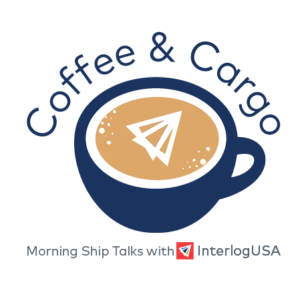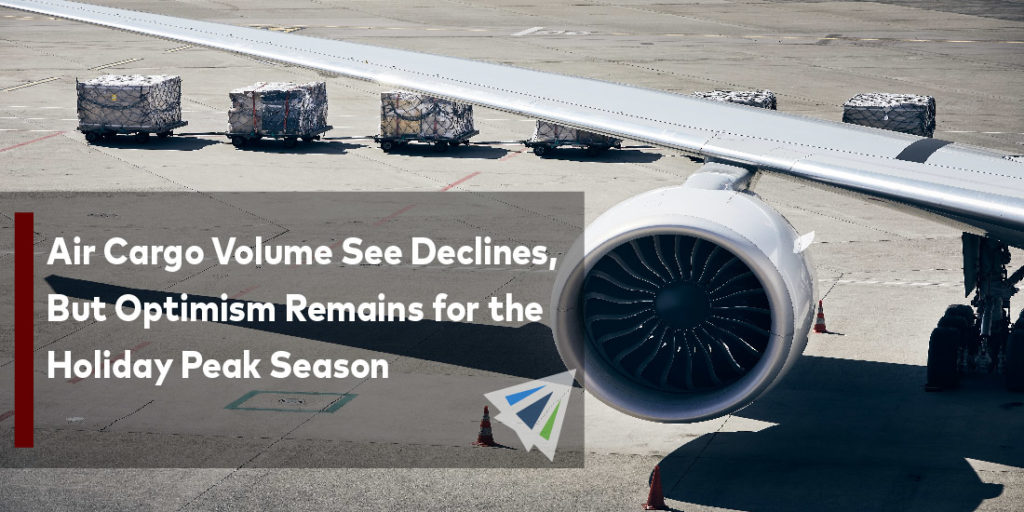Competitive Edge
September 14th, 2022
Stay Current with Interlog’s Weekly Newsletter:


UPDATE: U.S./Canada Ports – Number of Vessels at Anchor as of 09-13-22
- Vancouver: 38 Vessels at Anchor (+4)
- Savannah: 36 Vessels at Anchor (-7)
- Houston: 36 Vessels at Anchor (0)
- New York/Newark: 18 Vessels at Anchor (-4)
- Mobile: 12 Vessels at Anchor (-1)
- Los Angeles/Long Beach: 9 Vessels at Anchor (-4)
- San Francisco/Oakland: 5 Vessels at Anchor (-3)
- Charleston: 1 Vessels at Anchor (0)
Note: This count does not include vessels moored and being unloaded at port docks. Colored numbers in parentheses represents the change from last week over.
Courtesy: MarineTraffic
IMPORT: Asia to North America (TPEB)
Recent Developments:
- China’s Golden Week begins October 1 through October 7. Factories in China are closed during this time. Typically, demand and volumes from U.S. importers surge in the weeks leading up to the holiday, but so far, they have not.
- U.S. port congestion and intermodal delays remain contributing to unreliable scheduling.
- Contract negotiations between the International Longshore and Warehouse Union (ILWU) and Pacific Maritime Association (PMA) remain active. The existing labor contract between the two parties expired July 1.
- Blank sailings are becoming more commonplace as carriers aim to cut down on port congestion, especially on USEC.
Rates: Already softened rates from Asia to the U.S. coasts continue to decrease as demand from shippers has softened (in large part to over-ordering earlier in the year).
Space: Space is generally open at this time.
Capacity: Capacity has tightened in pockets. Shippers continue to divert cargo to the USEC and USGC due to fears of disruptions at West Coast ports from ongoing labor talks.
Equipment: Some inland terminals are reaching max capacity with inventory. Intermodal systems remain stressed with congestion and truck and chassis deficits.
TIPS:
- Book at least two weeks prior to the ready date.
- For cargo ready now, take advantage of opening space and fallen rates on the spot market.
- Reconsider averting West Coast routings. The “hot spots” for ship congestion and vessel wait times has shifted to the East Coast.
Our experts touched base on China’s Golden Week holiday and its impacts on the shipping industry in our Interlog Insights Newsletter!
IMPORT: Europe to North America (TAWB)
Recent Developments:
- Northern European hubs, such as Rotterdam, Antwerp, and Hamburg, remain critically congested.
- Labor-related tensions have gripped the U.K.
- Some 560 dockworkers at Britain’s Port of Liverpool are planning to strike September 19 to October 3 over an “inadequate” pay raise offer.
- Meanwhile, Britain’s largest, the Port of Felixstowe, is planning a second round of strikes to a similar rejection of a pay deal. The next strikes could start as soon as September 27. 2,000 workers at the port had an eight-day walkout last month.
- USWC ports have seen port and yard congestion and improvements to vessel waiting times.
- On the USEC, both ports of New York/Newark and Savannah remain having a significant number of backlogged vessels at anchor off their respective shores.
- The Port of Houston, on the U.S. Gulf Coast, is also grappling with vessel congestion.
Rates: Rates remain elevated but are holding steady for the foreseeable future.
Space: Space remains critical to the USEC. However, space has opened for direct routings to the USWC.
Capacity: Capacity for both North Europe and Mediterranean services remain gripped.
Equipment: Equipment at European seaports is not as readily available as it has been for the past few months. Inland terminals in Europe are also still reporting equipment shortages. On the U.S. side, truck and chassis availability remain concerning, especially with the latter.
TIPS:
- Book five or more weeks prior to ready date.
- Strongly consider premium services for no-roll options and improved reliability of cargo.
- Be flexible and entertain alternative routings. They could cut back on wait times.
EXPORT: North America to Asia
Recent Developments:
- For the USEC, port congestion remains an issue for Savannah and New York/Newark.
- Diminished schedule integrity continues to challenge post earliest return dates.
- Vessel arrivals remain smooth for USWC POLs.
Rates: So far, no GRIs announced for September.
Capacity: Available capacity remains fluid for USWC POLs.
Equipment: Truck, container, and chassis availability remains dire and has significantly contributed to congestion of the intermodal system and IPI origins. Standard equipment at ports remains available unless carriers advise otherwise.
TIPS:
- Book four to five weeks prior to the time of departure to secure necessary equipment and vessel space.
Highlights of the Week:
– A lot is happening in the rail industry lately, with a possible rail strike/stoppage occurring this Friday, September 16th. Congress does have the power to end a shutdown, but they must pass a law in order to do so. We will continue to keep you informed; you can follow our social media for more updates.
– Norfolk Southern Railway is rebuilding how it processes ocean containers starting in 2023. Their plan is to store more boxes in each terminal through stacking and shifting the responsibility for procuring chassis to shippers and truckers.
– Another typhoon is making its way to China’s East Coast. Container yards in downtown Shanghai closed Tuesday evening local time, while Shanghai’s main container terminals are scheduled to close by Wednesday at 8am local time. In Ningbo, container terminals in the city’s main port district stopped accepting cargo on Tuesday evening and all port operations are set to stop early Wednesday. The hope is that terminals and deports will reopen on Thursday, pending potential damage.
– Vancouver Fraser Port Authority has once again postponed the rollout of their new clean truck program until next spring, on April 3rd, 2023. It was originally scheduled to take effect on September 15th, 2023.
Source: Washington Post, Journal of Commerce, Port of Vancouver, Journal of Commerce
Freight News
U.S. Imports remain steady and are coming in at a near record pace in August
August 2022 imports were basically the same as they were in July, as data shows they only fell 0.1 percent or 1,864 twenty-foot equivalent units (TEUs), compared to last month.
If we compared August imports to what they were pre-pandemic in August 2019, they were up 18 percent. While in July, volumes were up 15 percent from pre-pandemic levels, Freightwaves reports. This is showing import strength even throughout a slowing economy, inflation and higher fuel costs.
Now, over on the U.S. East and Gulf Coast they still are facing harsh backlogs at the ports. As of Monday morning, there were 37 container ships off Savannah, Georgia; 25 off New York/New Jersey; 24 off Houston; and 12 off Virgina and Maryland – Freightwaves reports.
Something else to note on the U.S. East Coast, the Port of New York/New Jersey has postponed and are reworking their container dwell fee, after they received input from ocean carriers. The container dwell fee was originally going to start on September 1st, Supply Chain Dive reports.
Golden Week is right around the corner
Golden Week, a seven day holiday in China, will be here before we know it and with that comes a traditional slowdown. Golden Week will start on Saturday, October 1st and end on Friday, October 7th. It’s typical to see some blank sailings around Golden Week. It is important to note that factories will be closed during that holiday week and operations will resume the day after the holiday.
According to The Loadstar, nearly 10 percent (8.8 percent to be exact), of capacity is set to be pulled from the Asia to Europe market by ocean carriers throughout the next 12 weeks. Some say that the rising list of problems and changes such as strikes, bottlenecks and equipment shortages are also reasons for the blank sailings.
In our Interlog Insights newsletter this past week, we discussed in further detail how Golden Week could impact import demand and rates, what to expect during Golden Week, and how to prepare. You can sign up for the newsletter below to read further.
Sign up for next week's webinar!

Make sure you sign up for our next webinar that is taking place on Wednesday September 21st where we will be discussing current and exciting topics in the freight industry.
If you have never joined our Coffee and Cargo webinar click the "Watch now" button to view our most recent webinar.
We look forward to seeing you there!
Sign up for our
industry answers
Our team works to provide valuable, unique, and relevant content to assist you in finding solutions. Sign up now.

